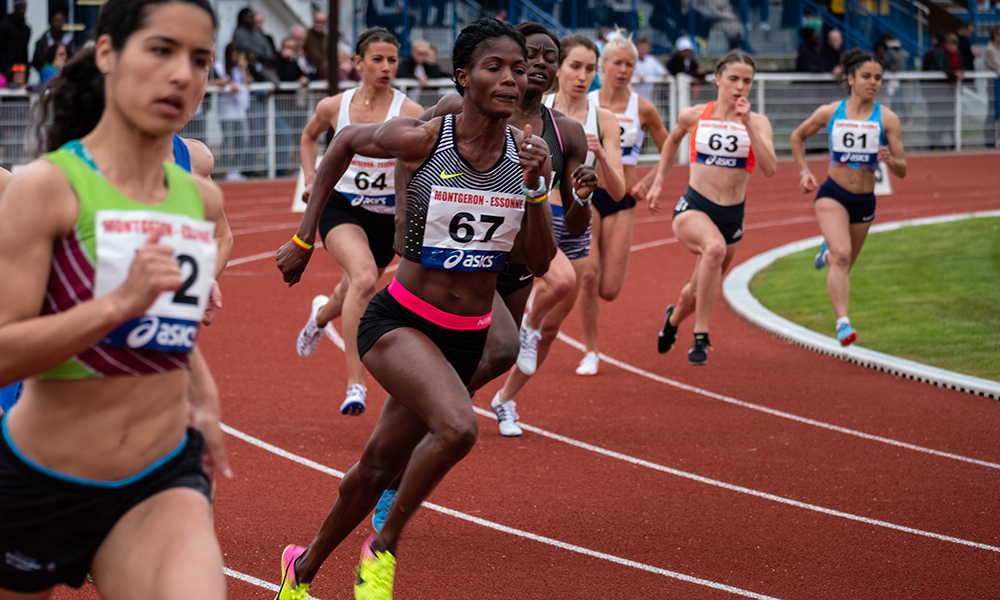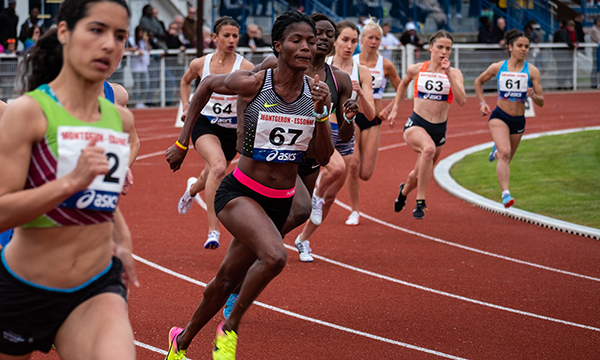Women's Sports Medicine Program
Exercise & the Heart of the Female Athlete


Contact Information
Female sports participation has increased enormously, such that women now participate in almost equal numbers as men across all levels of sport, from high school through the Olympics (1-3). Increased participation has allowed us to learn more about how women’s bodies adapt to exercise training, and to identify interesting differences in exercise physiology between women and men. Here, Dr. Meagan Wasfy of Mass General’s Women’s Sports Medicine Program and Cardiovascular Performance Program presents some of her latest findings on the heart of the female athlete.
Exercise Adaptations in the Heart of the Female Athlete
Exercise training induces a myriad of adaptations in the systems of the body that all have to cooperate to produce an exercise effort. This includes the cardiovascular system and the heart, which enlarges and changes function to accommodate the extra work required to pump blood out to exercising muscles. These healthy adaptations that occur in the heart can sometimes be confused for dangerous forms of heart disease and figuring out how to tell the difference is critical when female athletes present for evaluation in the clinic.
An electrocardiogram (ECG) is a common test used to screen young competitive athletes for heart disease. The ECG of an athlete will appear different than that of an inactive person, due to the healthy heart enlargement that occurs with exercise, and expert guidelines exist to help physicians figure out whether an athlete’s ECG should be considered normal or abnormal. Female athletes are less likely than male athletes to have many of the ECG patterns that might be mistaken as abnormal(4-8), but more likely to have a specific pattern (called anterior T-wave inversion) that requires further evaluation to rule out associated heart conditions.(7,9-11)
When more heart testing is required in the course of a doctor’s evaluation or pre-participation screening, the next step beyond an ECG is usually some form of imaging of the heart. Female and male athletes’ hearts will both adaptively enlarge and thicken due to exercise, but just how big a heart can be considered normal differs between sexes. The differences go beyond just body size. For example, thickened heart muscle in athletes can sometimes be concerning for a specific genetic condition called hypertrophic cardiomyopathy, which is an important diagnosis because it is amongst the most common causes of sudden cardiac death in young athletes. We become concerned about this diagnosis when the thickness of the heart muscle exceeds what we might expect for a given athlete – in male athletes, cardiac walls of up to 15 mm may be normal, but it is very rare for female athletes to have walls greater than 12 mm. Overall, the interpretation of heart imaging in athletes necessitates an individualized approach that takes into account sex, body size, ethnicity and sport type. Mass General clinicians take this bespoke approach to our cardiac patients participating in our sports medicine programs.
Identifying Cardiac Disease in the Female Athlete
When female athletes have heart testing results that do not appear to be entirely consistent with those of the healthy athlete’s heart, the most crucial diseases to exclude are those associated with risk to sport participation. Though rare, sudden cardiac death during sport can occur, however, women have a slightly lower prevalence of some of the most common heart conditions associated with sudden cardiac death in young (< 35 years old) athletes, such as hypertrophic cardiomyopathy. Even accounting for this difference in the number of female athletes with these potentially dangerous heart conditions, the rate of sudden cardiac death in young athletes is consistently and disproportionally lower in females than males (12-19) What accounts for this apparent protection is yet to be fully determined.
Older (or “masters;” >35 years old) female athletes also seem protected in part from some of the common cardiovascular conditions that arise in their male counterparts. For example, while consistent exercise is protective against the development of most heart conditions with age, there is a marked increase in one specific heart arrhythmia, called atrial fibrillation, in male athletes performing high amounts of exercise over decades.(20) While data is still emerging, some studies suggest that female masters athletes do not have the same degree of elevation in risk of atrial fibrillation.(21)
On the other hand, female athletes are more likely than males to harbor medical conditions that can impact the optimal performance of the cardiovascular system during exercise, such as iron-deficiency anemia, pregnancy, peri-menopause / menopause, autoimmune disease, and thyroid disease. Comprehensive care for the female athlete presenting for evaluation includes a heightened awareness and appropriate testing for these conditions.
Services We Offer
The Mass General Cardiovascular Performance Program offers specialized cardiac care for athletes. To make an appointment for a fast, comprehensive consultation, please call 617-643-7117.
References:
- International Olympic Committee. Factsheet: Women in the Olympic Movement – Update June 2016. International Olympic Committee, Lausanne, Switzerland 2016.
- Irick E. NCAA Sports Sponsorship and Participation Rates Report. Indianapolis, IN: National Collegiate Athletic Association, 2017.
- 2016-17 High School Athletics Participation Survey. The National Federation of State High School Associations, 2017.
- Wasfy MM, DeLuca J, Wang F et al. ECG findings in competitive rowers: normative data and the prevalence of abnormalities using contemporary screening recommendations. Br J Sports Med 2015;49:200-6.
- Pelliccia A, Maron BJ, Culasso F et al. Clinical significance of abnormal electrocardiographic patterns in trained athletes. Circulation 2000;102:278-84.
- Storstein L, Bjørnstad H, Hals O, Meen HD. Electrocardiographic Findings according to Sex in Athletes and Controls. Cardiology 1991;79:227-236.
- Finocchiaro G, Dhutia H, D’Silva A et al. Effect of Sex and Sporting Discipline on LV Adaptation to Exercise. JACC: Cardiovascular Imaging 2017;10:965-972.
- Brosnan M, La Gerche A, Kalman J et al. Comparison of frequency of significant electrocardiographic abnormalities in endurance versus nonendurance athletes. The American journal of cardiology 2014;113:1567-73.
- Malhotra A, Dhutia H, Gati S et al. Anterior T-Wave Inversion in Young White Athletes and Nonathletes: Prevalence and Significance. J Am Coll Cardiol 2017;69:1-9.
- Papadakis M, Basavarajaiah S, Rawlins J et al. Prevalence and significance of T-wave inversions in predominantly Caucasian adolescent athletes. Eur Heart J 2009;30:1728-35.
- Sheikh N, Papadakis M, Schnell F et al. Clinical Profile of Athletes With Hypertrophic Cardiomyopathy. Circ Cardiovasc Imaging 2015;8:e003454.
- Harmon KG, Asif IM, Maleszewski JJ et al. Incidence and Etiology of Sudden Cardiac Arrest and Death in High School Athletes in the United States. Mayo Clinic Proceedings 2016;91:1493-1502.
- Toresdahl BG, Rao AL, Harmon KG, Drezner JA. Incidence of sudden cardiac arrest in high school student athletes on school campus. Heart Rhythm 2014;11:1190-4.
- Harmon KG, Asif IM, Maleszewski JJ et al. Incidence, Cause, and Comparative Frequency of Sudden Cardiac Death in National Collegiate Athletic Association Athletes. A Decade in Review 2015;132:10-19.
- Maron BJ, Haas TS, Murphy CJ, Ahluwalia A, Rutten-Ramos S. Incidence and Causes of Sudden Death in U.S. College Athletes. Journal of the American College of Cardiology 2014;63:1636-1643.
- Kim JH, Malhotra R, Chiampas G et al. Cardiac Arrest during Long-Distance Running Races. New England Journal of Medicine 2012;366:130-140.
- Mathews SC, Narotsky DL, Bernholt DL et al. Mortality Among Marathon Runners in the United States, 2000-2009. The American Journal of Sports Medicine 2012;40:1495-1500.
- Roberts WO, Roberts DM, Lunos S. Marathon related cardiac arrest risk differences in men and women. British Journal of Sports Medicine 2013;47:168-171.
- Harris KM, Creswell LL, Haas TS, et al. Death and cardiac arrest in u.s. triathlon participants, 1985 to 2016: A case series. Annals of Internal Medicine 2017.
- Estes NA, Madias C. Atrial Fibrillation in Athletes: A Lesson in the Virtue of Moderation. JACC: Clinical Electrophysiology 2017.
- Mohanty S, Mohanty P, Tamaki M et al. Differential Association of Exercise Intensity With Risk of Atrial Fibrillation in Men and Women: Evidence from a Meta-Analysis. J Cardiovasc Electrophysiol 2016;27:1021-9.
Women's Sports Medicine Program
We provide our patients with comprehensive, coordinated care from experts who understand the unique needs of women in sports.
Sports Medicine at Mass General Brigham
Mass General Brigham's network of Harvard Medical School-affiliated experts leads the nation in sports medicine research, technology, and innovations.
